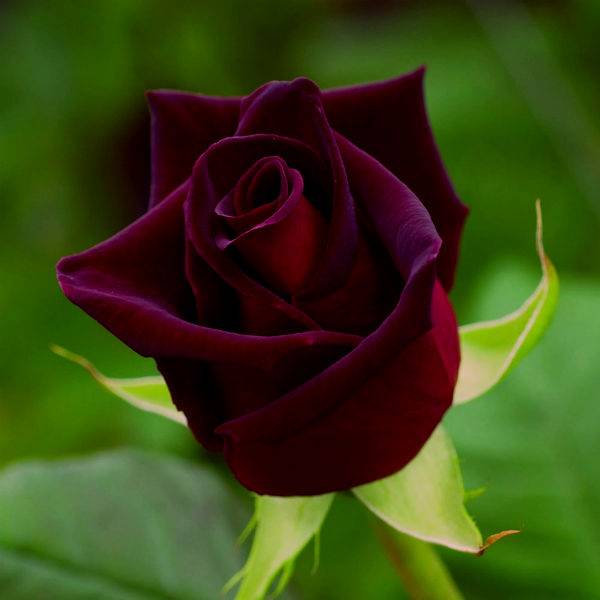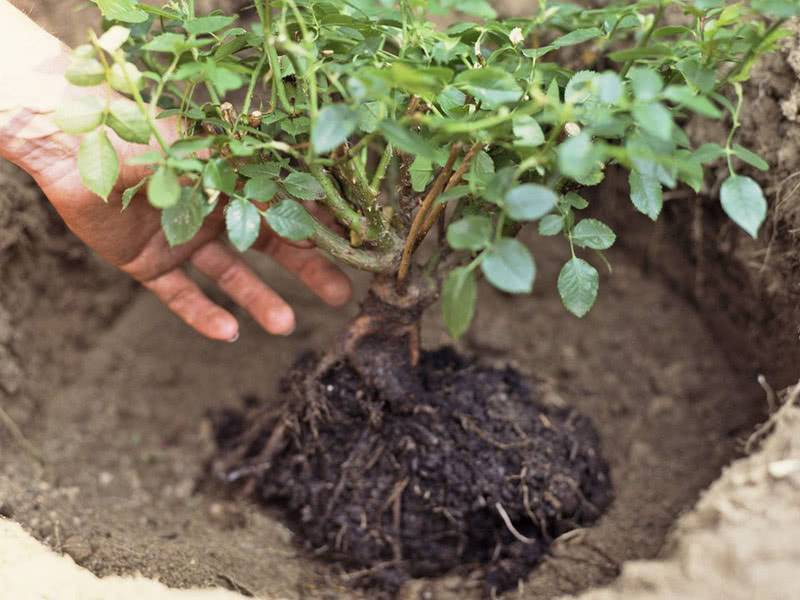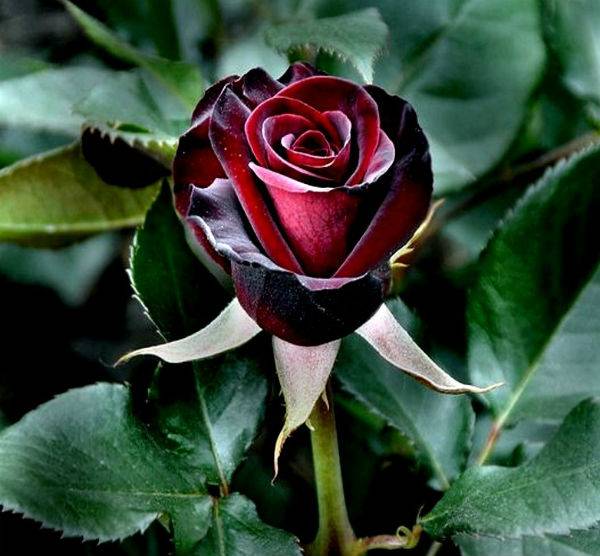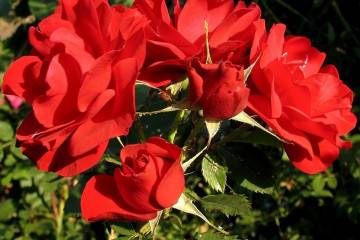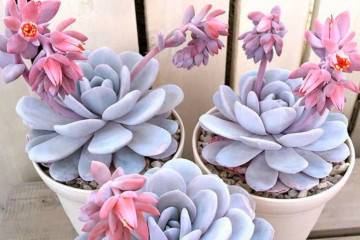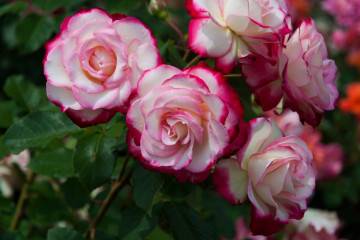Rose Black Prince - description of the variety
Content:
The Black Prince variety is the result of the work of British breeders. Until now, it remains the world's finest black petal rose. This hybrid has been very popular since its inception to this day.
A brief description of the Black Prince rose (Black Prince, Black Prince)
The Black Prince belongs to the group of hybrid tea roses. Variety parameters:
- Bud size 8-9 cm.
- The shape of the flower is cupped.
- Terry flowers.
- The petals are slightly pointed, burgundy with a black tint. One bud contains 40-50 petals.
- Shoots are powerful, strongly leafy, each with 2-3 flowers.
- There are few thorns, but they are large.
- The foliage is bright green with a slight reddish tint.
- The aroma is pronounced, bright, with a wine tint.
- An adult bush reaches 1.5 meters in height.
Advantages and disadvantages of the variety
Description of the Black Prince rose variety includes positive and negative aspects.
Pros:
- black buds;
- flowers stand in a vase for a long time;
- few thorns on the shoots;
- powerful peduncles.
Minuses:
- the rose is weakly resistant to pests and diseases;
- flowers are prone to wilting, since for huge buds the rose has a weak peduncle.
Use in landscape design
It is used as a single plant and in group plantings, where it favorably emphasizes the beauty of light-colored roses.
Growing a flower
Rose Black Prince is a culture of active agricultural technology, so caring for it cannot be called too simple. Planting material should be selected grafted, Dutch or Russian production. It is preferable to plant a rose in open ground in mid-May, when the threat of frost has passed and the soil warms up enough.
The ideal place to grow the Black Prince is a flat, draft-free area with loose, fertile soil, low groundwater and good drainage.
The plant prefers nutritious, slightly acidic soil, pH 6-6.5. The addition of peat or manure will help to increase the acidity, and to reduce it - lime or ash.
To plant a rose correctly, you need to take the following steps:
- Dig a landing hole with a depth and diameter of at least 60 cm.
- A 10 cm thick drainage layer is laid on the bottom of the pit. It can be expanded clay, pebbles, shell rock.
- A 20 cm thick layer of nutrient soil is poured over the drainage, mixed with 20 g of superphosphate and 20 g of potassium sulfate.
- The seedling is placed in the prepared hole.
- The root system is covered with soil.
- The seedling is watered abundantly with water at room temperature.
- The soil around the seedling is mulched with peat, bark, sawdust.
Plant care
The black prince requires care with the obligatory watering and feeding. In hot summer, you need to water the rose every 2-3 days. In rainy weather - at least once a week. Loosening and mulching help to retain moisture in the soil.
Fertilization is carried out in several stages:
- In the spring, nitrogen should be applied in the form of inorganic and organic fertilizers.
- In summer, complex fertilizers are used to support flowering. You can apply liquid fertilizers for foliar feeding.
- In the fall, after the end of flowering, it is imperative to apply phosphorus-potassium fertilizer.
Pruning and preparing for winter
Pruning is carried out twice a season:
- Anti-aging is held in October. During this pruning, shoots are cut 2-3 buds above the ground.
- Sanitary pruning is done in the spring. Rotten, dried, growing inward branches are removed.
The variety is resistant to cold temperatures down to -23 degrees. To prepare rose bushes for winter, they begin with pruning. Then they are covered with spruce branches.
Blooming rose
The main purpose of a rose on the site is to decorate it with your own flowers, and this is why it is planted. The flowering of the variety begins in June and usually lasts more than three months.
In the summer, when the rose blooms, it needs a sufficient amount of moisture and nutrients. During this period, be sure to carry out:
- weeding;
- loosening;
- mulching with hay, peat, bark, sawdust;
- watering;
- top dressing with potash fertilizers or chicken droppings;
- pesticide treatment as a preventive measure.
What to do if it does not bloom
The main reasons why a rose does not bloom:
- The age of the bush. In the first year after planting, the rose does not bloom. But it may also be the other way around - the plant has aged, requires rejuvenation.
- Inappropriate place. The rose is dark, cold, humid.
- Wrong, too strong pruning. Or her absence. Faded buds left on the bush inhibit the development of new ones.
- Root shoots. It needs to be removed, the rose is wasting energy.
- Diseases. For example, a bacterial burn.
- Incorrect feeding. An overfed rose will not bloom, as all the nutrition goes into the leaves and shoots. With a lack of nutrition, the plant does not have the strength to bloom.
Flower propagation
Reproduction methods are shown in the table.
| Way | When is it produced | Description |
| Semi-lignified green cuttings | summer |
|
| Lignified cuttings | Spring | |
| Dividing the bush | before bud break |
|
| Layers | early spring | Layers at least 1.5 years old are separated from the mother bush and planted as an independent plant. |
Diseases, pests and ways to control them
The variety is not resistant to diseases and pests. The best strategy is to use preventive pesticide treatments several times per season.
The Black Prince is a legendary variety, very good both in a rose garden and in a vase. This rose captivates not only with its appearance, but also with its magical aroma.
